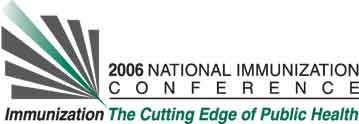Learning Objectives for this Presentation:
By the end of the presentation participants will be able to:
Describe the components of a statewide adult immunization coalition
Understand how to improve statewide immunization communication
Know how to implement a quality improvement process in improving immunization systems
Background:
In 1995, a statewide coalition was formed. Over the next decade a number of discrete programs were started to address system changes, education, reimbursement and other issues related to increasing immunizations.
Setting:
Programs are carried out to assist providers in community agencies and patient care settings in improving the delivery of immunization services, and to give providers educational materials for staff and patients/residents
Population:
The target population is all high-risk groups in the state, particularly individuals at risk for complications from influenza and pneumonia.
Project Description:
The program built on MassPRO's efforts to improve immunizations for Medicare beneficiaries, and developed in two ways:(1) partnering with key agencies, particularly with state and local health departments, health plans, medical society, and trade associations, and (2) supporting local immunization efforts in community, hospital, and nursing home settings. Particularly unique has been the development of step-by-step workbooks, an employee flu campaign kit, a health plan reimbursement program for community agencies, and a statewide public flu clinic web-site.
Results/Lessons Learned:
In addition to significant improvements in immunization rates, a number of lessons have been learned:
1. Having a statewide coalition of organizations involved with immunization campaigns significantly improved communications, particularly during times of delays and shortages.
2. Program development was linked to responding to concerns and issues raised in meetings with partners.
3. System changes in various provider settings can be achieved and result in more effective immunization programs (i.e., nursing homes and hospitals)
4. Providers positively responded to improving their employee immunization program when given useful tools, and assistance.
Web Page:
www.masspro.org
See more of Posters
See more of The 40th National Immunization Conference (NIC)

